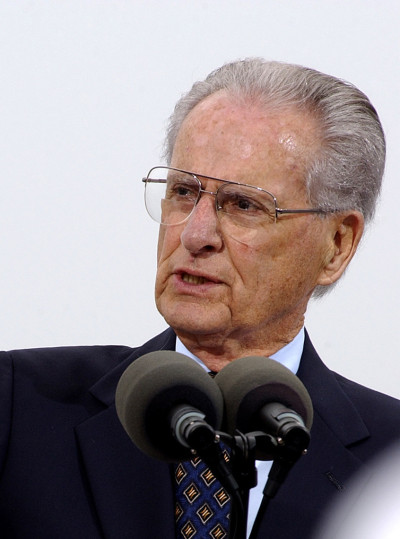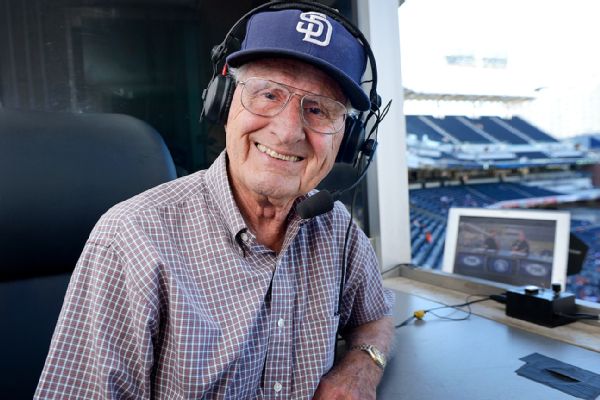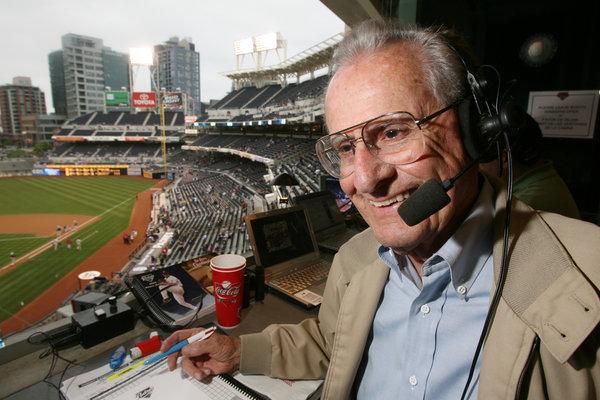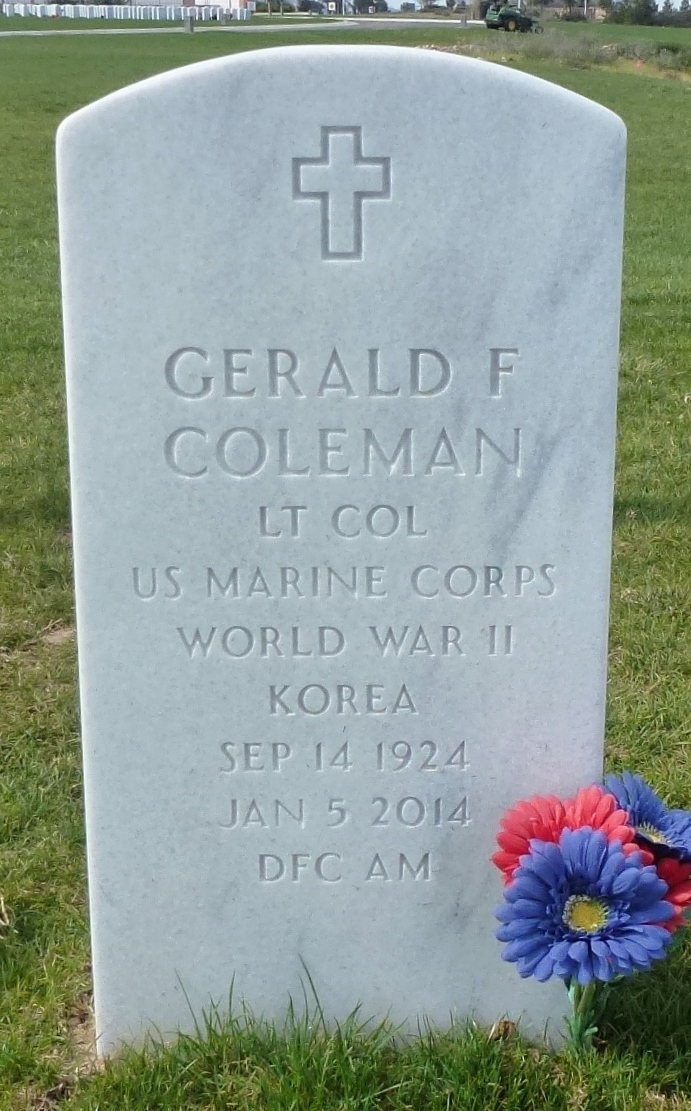Jerry Coleman (Jerry Coleman)

Born in San Jose, California, Coleman graduated from Lowell High School, then spent his entire playing career with the New York Yankees. He played six years in the Yankees’ minor league system before reaching the big club in 1949. Coleman hit .275 in his first year and led all second basemen in fielding percentage. He was the Associated Press’ rookie of the year in 1949, and finishing third in balloting by Baseball Writers Association of America. Coleman avoided a sophomore jinx by earning a selection to the All-Star team in 1950. He then shined in the World Series with brilliant defense, earning him the BBWAA’s Babe Ruth Award as the series’s most valuable player.
Nicknamed “The Colonel”, due to being promoted to the rank of Lieutenant Colonel, Coleman was a Marine aviator who postponed his entry into professional baseball in World War II and later left baseball to serve in the Korean War. While a Marine Corps aviator he flew 120 combat missions (57 during WWII and 63 in Korea). and received numerous honors and medals including two Distinguished Flying Crosses. In recent years Coleman received numerous honors; including, being inducted into the USMC Sports Hall of Fame, for his call to duty. Coleman was the only Major League Baseball player to have seen combat in two wars. (While Ted Williams served during both WWII and Korea, he flew combat missions only in the Korean war.)
Coleman’s career declined after he was injured the following season, relegating him to a bench role. He was forced to retire after the 1957 season, but he left on a good note, hitting .364 in a World Series loss against the Milwaukee Braves. He appeared in the World Series six times in his career, winning four of them.
In 1958, Yankees general manager George Weiss named Coleman personnel director, which involved Coleman scouting minor league players. Roy Hamey terminated Coleman from that position, when Harney became the Yankees’ General Manager. It was only after Coleman met with Howard Cosell that Coleman considered becoming a broadcaster.
In 1960, Coleman began a broadcasting career with CBS television, conducting pregame interviews on the network’s Game of the Week broadcasts. His broadcasting career nearly ended that year; he was in the midst of an interview with Cookie Lavagetto when the national anthem began playing. Coleman kept the interview going through the anthem, prompting an avalanche of angry letters to CBS. In 1963 he began a seven-year run calling New York Yankees’ games on WCBS radio and WPIX television. Coleman’s WPIX call of ex-teammate Mickey Mantle’s 500th career home run in 1967 was brief and from the heart:
Here’s the payoff pitch… This is IT! There it goes! It’s out of here!
After broadcasting for the California Angels for two years, in 1972 Coleman became the lead radio announcer for the San Diego Padres, a position he held every year until his death in 2014 except for 1980, when the Padres hired him to manage (predating a trend of broadcasters-turned-managers that started in the late 1990s). He also called national regular-season and postseason broadcasts for CBS Radio from the mid-1970s to the 1990s. Coleman was also famous for catchphrases such as, “Oh Doctor!”, “You can hang a star on that baby!”, “And the beat goes on,” and “The natives are getting restless.”
During an interview in the height of the steroids scandal in 2005, Coleman stated, “If I’m emperor, the first time 50 games, the second time 100 games and the third strike you’re out,” referring to how baseball should suspend players for being caught taking steroids. After the 2005 World Series, Major League Baseball put a similar policy in effect.
Coleman was known as the “Master of the Malaprop” for making sometimes embarrassing mistakes on the microphone, but he was nonetheless popular. In 2005, he was given the Ford C. Frick Award of the National Baseball Hall of Fame for broadcasting excellence, and is one of five Frick award winners who also played in the Major Leagues (the others are Joe Garagiola, Tony Kubek, Tim McCarver and Bob Uecker). He was inducted into the San Diego Padres Hall of Fame in 2001. In the fall of 2007, Coleman was inducted to the National Radio Hall of Fame as a Sports Broadcaster for his years as the play by play voice of the San Diego Padres.
Ted Leitner and Andy Masur replaced Coleman for most of the radio broadcasting efforts for each Padres game. He did, however, still work middle innings as a color analyst. As of the 2010 season, he reduced his broadcast schedule down to 20–30 home day games. As of November 2010, Coleman was the third oldest active play-by-play announcer, behind only fellow Hall of Famers Felo Ramirez and Ralph Kiner. Coleman collaborated on his autobiography with longtime New York Times writer Richard Goldstein; their book An American Journey: My Life on the Field, In the Air, and On the Air was published in 2008. On September 15, 2012, the San Diego Padres unveiled a Jerry Coleman statue at Petco Park. Coleman’s statue is only the second statue at Petco Park, the other being of Hall of Fame outfielder Tony Gwynn. Coleman’s death was reported by the San Diego Padres on January 5, 2014. He died after being hospitalized after a fall in his home. He was 89.
Born
- September, 14, 1924
- USA
- San Jose, California
Died
- January, 05, 2014
- USA
- San Diego, California
Cemetery
- Miramar National Cemetery
- San Diego, California
- USA




